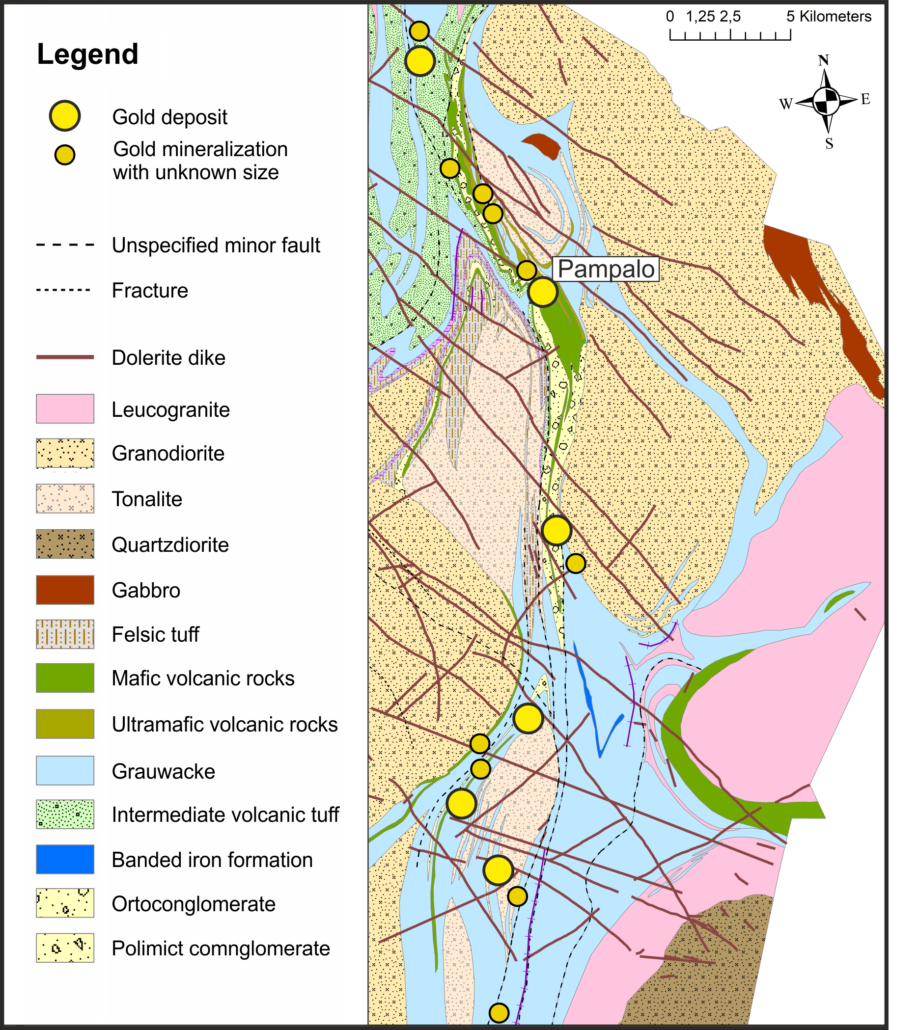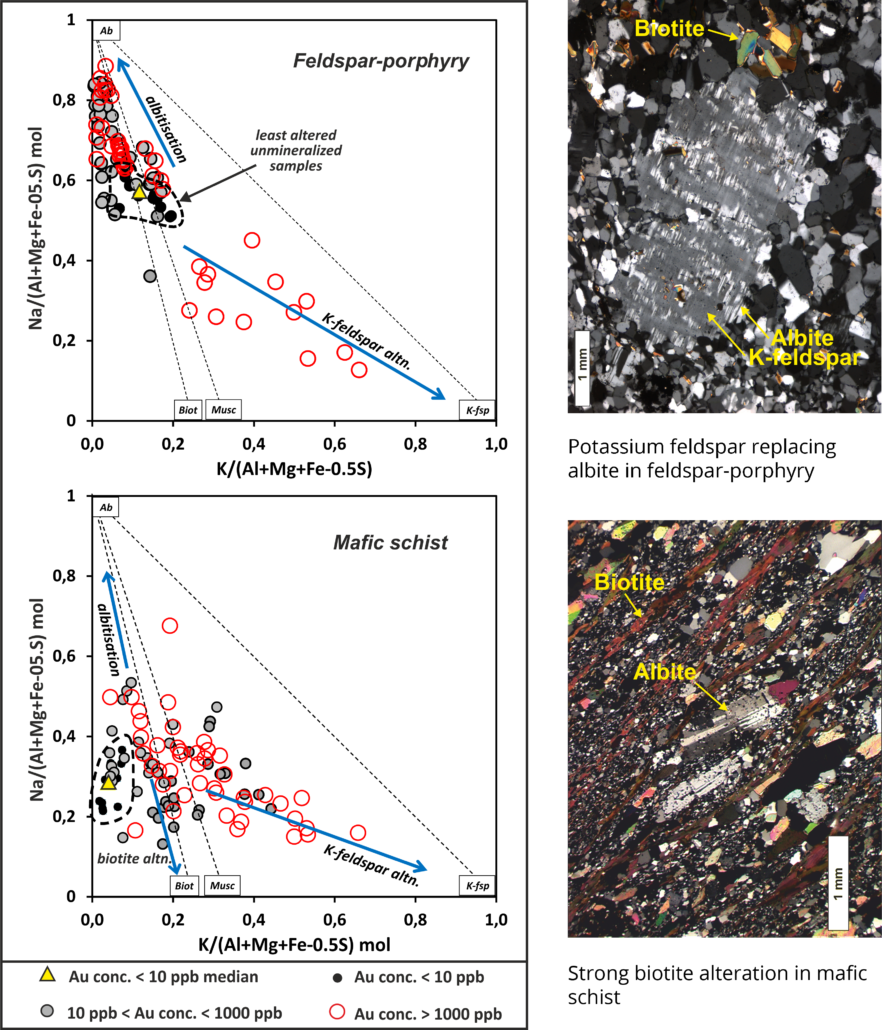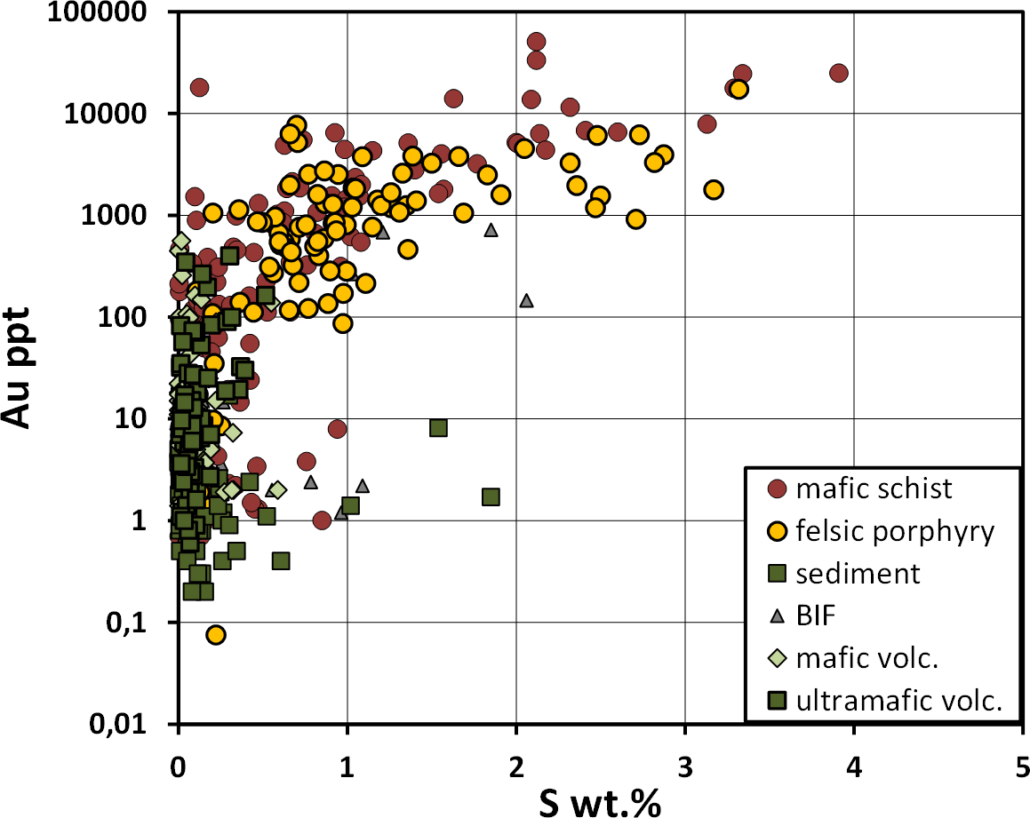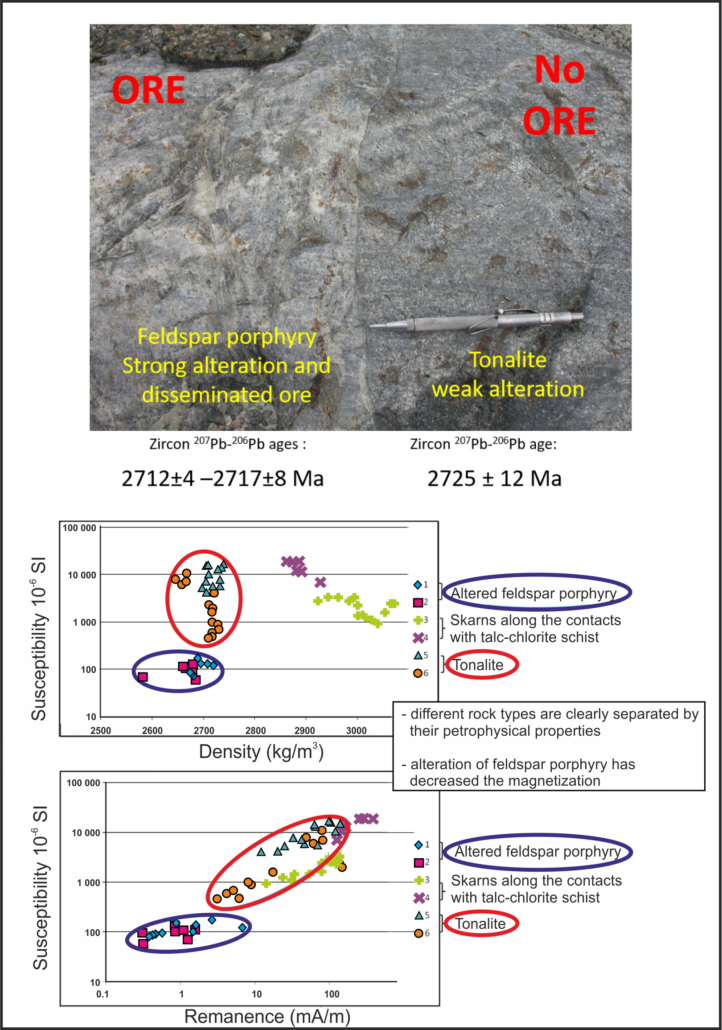In the Pampalo mine, Hattu schist belt, the disseminated and vein type ore is hosted by a NNE-oriented sinistral shear zone located in the eastern limb of a multiple folded NNW-oriented antiform. The metabasalt in the footwall of the mineralized zone shows amphibole-chlorite-carbonate alteration.
The major mineralized zone consits of an up to 30-50 m wide intermediate meta-pyroclastic rock unit (mafic schist) with up to a few meters thick boudins of felsic feldspar-prorphyry dikes. These rocks are characterised by intense albite-potassium feldspar-biotite alteration with local patches and veinlets of quartz-tourmaline-sericite. The largely barren talc-chlorite schist (meta-komatiite) in the hanging wall also contains altered blocks of feldspar porphyry with gold mineralization and weakly altered blocks of tonalite. The talc-chlorite schist is also characterised by carbonate alteration.
Along the contacts with talc-chlorite schist, up to 10-15 cm thick amphibole rich reaction zones rim the feldspar-porphyry and tonalite blocks. Significant (>1 g/t) gold grades are restricted to the mafic schist and felspar-porphyry units indicating that albitization, Potassium feldspar alteration and biotitization are the major alteration types associated with gold deposition.
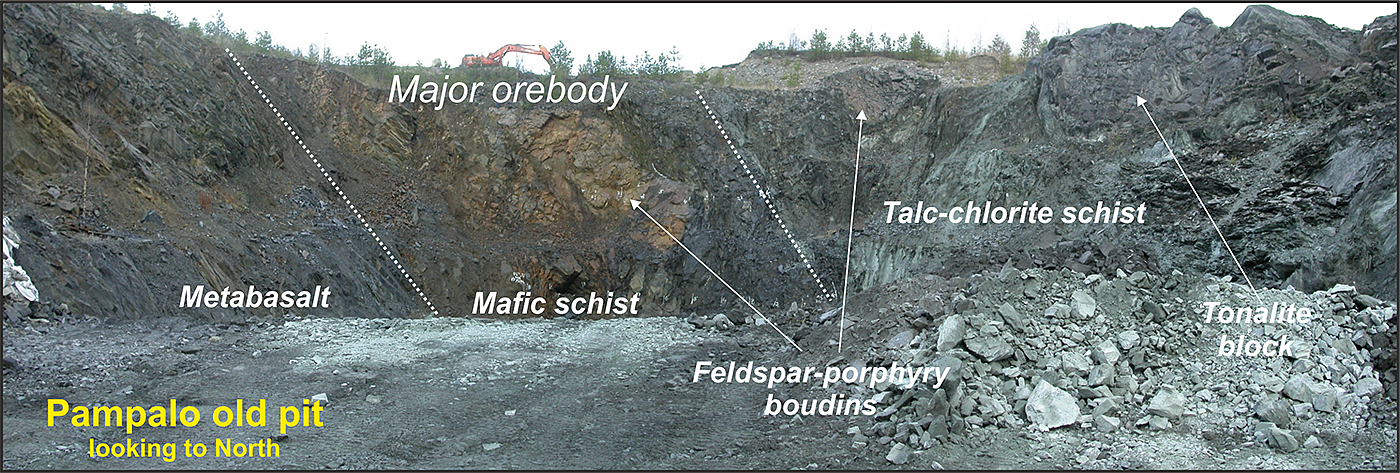
Gold concentrations are also well correlated with the sulphur (predominantly pyrite) contents of the mafic schist unit and feldspar-porphyry suggesting that sulphurization of these lithological units was also an important process leading to enrichment of gold. Occurrences of elevated gold concentrations also correlate with the presence of potassium feldspar alteration superimposed on albite alteration.
Pb isotope data for hydrothermal potassium feldspar suggest that K-feldspar alteration of albite may be related to the Paleoproterozoic overprint on the Archaean ore. The barren and mineralized intrusive rocks and blocks can be distinguished by their remanent magnetism and magnetic susceptibility.
(Last update: 20.05.2020)
